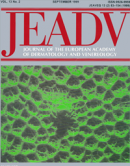
Types of vitiligo
Vitiligo is divided into three main types: bilateral vitiligo, segmental vitiligo and perinevoid vitiligo.
This classification is based on the distribution of the white patches on the skin.
Bilateral vitiligo
Bilateral vitiligo is the most common form, including about 90% of all types of vitiligo.
In this form the white patches of vitiligo are arranged symmetrically on the right and left side of the patient’s body (for example, on both hands or both knees).
Bilateral vitiligo is, in its turn, subdivided according to the number of patches, the parts of the body where they appear and the size of the white areas. This type of classification is simply descriptive and is not related to how the disorder may evolve over time.
Thus, one can talk of:
- Acrofacial vitiligo when the patches appear only on the limbs and face.
- Generalised vitiligo when the patches cover more than 70% of the surface of the body.
- Focal vitiligo when there are few patches which generally do not change much over time.
Segmental vitiligo
Segmental vitiligo accounts for 10% of all forms of vitiligo. In cases of segmental vitiligo the white patches on the skin appear only on half of the patient’s body (only on the right or only on the left) and are arranged as if they are following a path.
Sometimes patients have been found with both bilateral and segmental vitiligo.
Perinevoid vitiligo
Perinevoid vitiligo is a fairly rare type of vitiligo in which the patches of vitiligo start from a mole and extend centrifugally to form a white halo all around the mole.
When these lesions are found isolated on a patient’s body the mole is called a Sutton’s halo naevus after the person who first studied them.
This phenomenon is often seen in patients with bilateral vitiligo.














